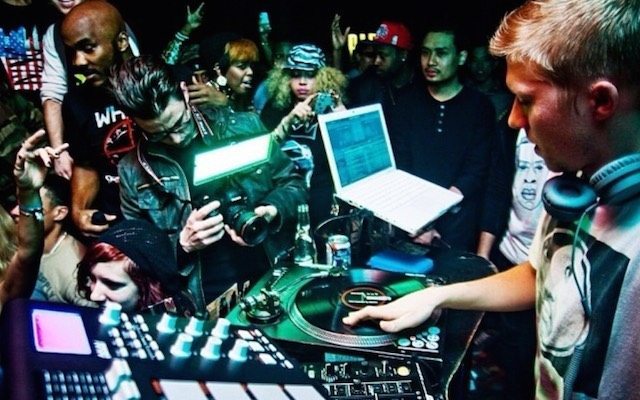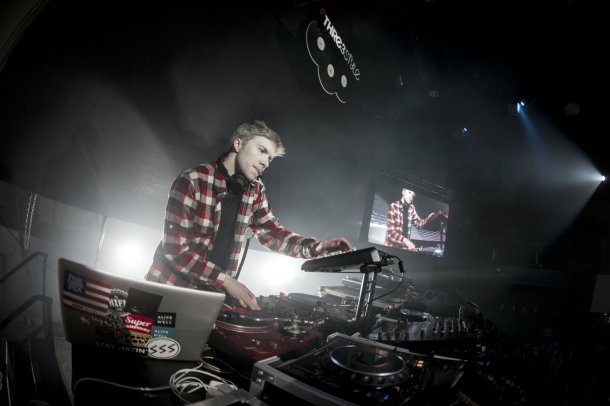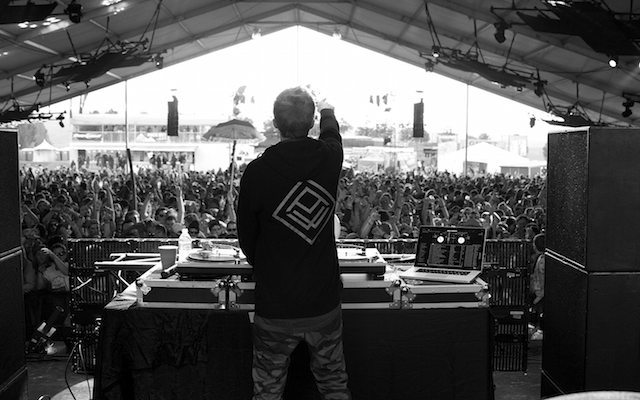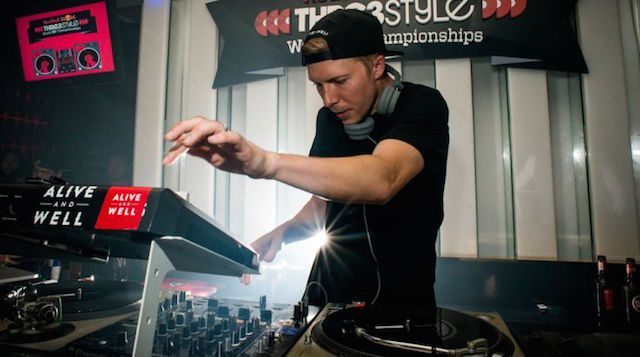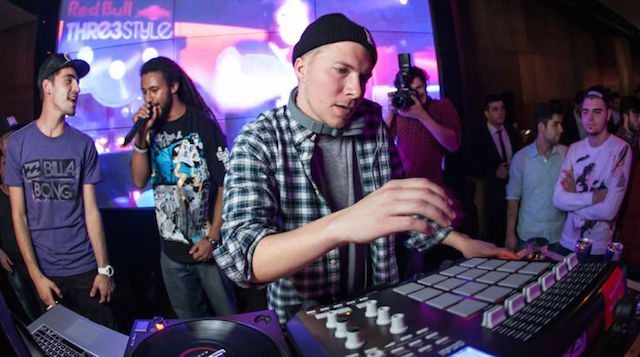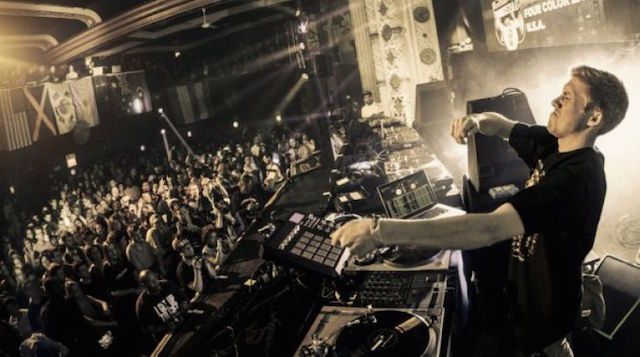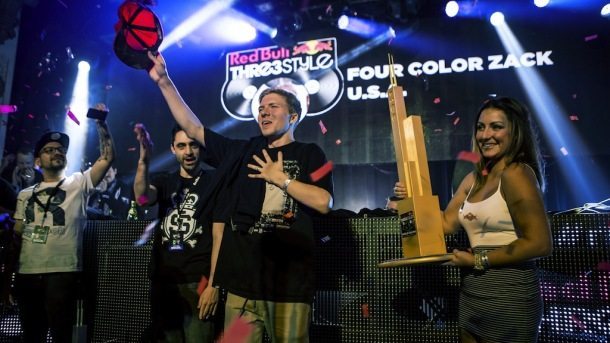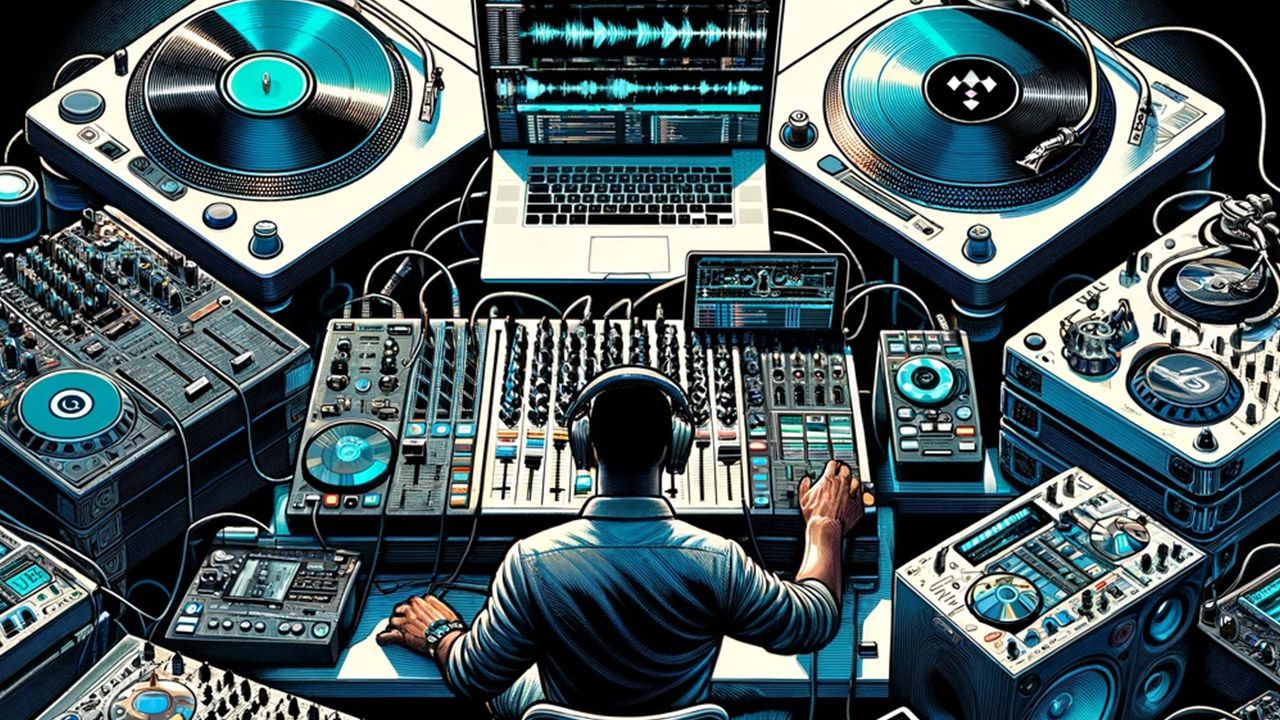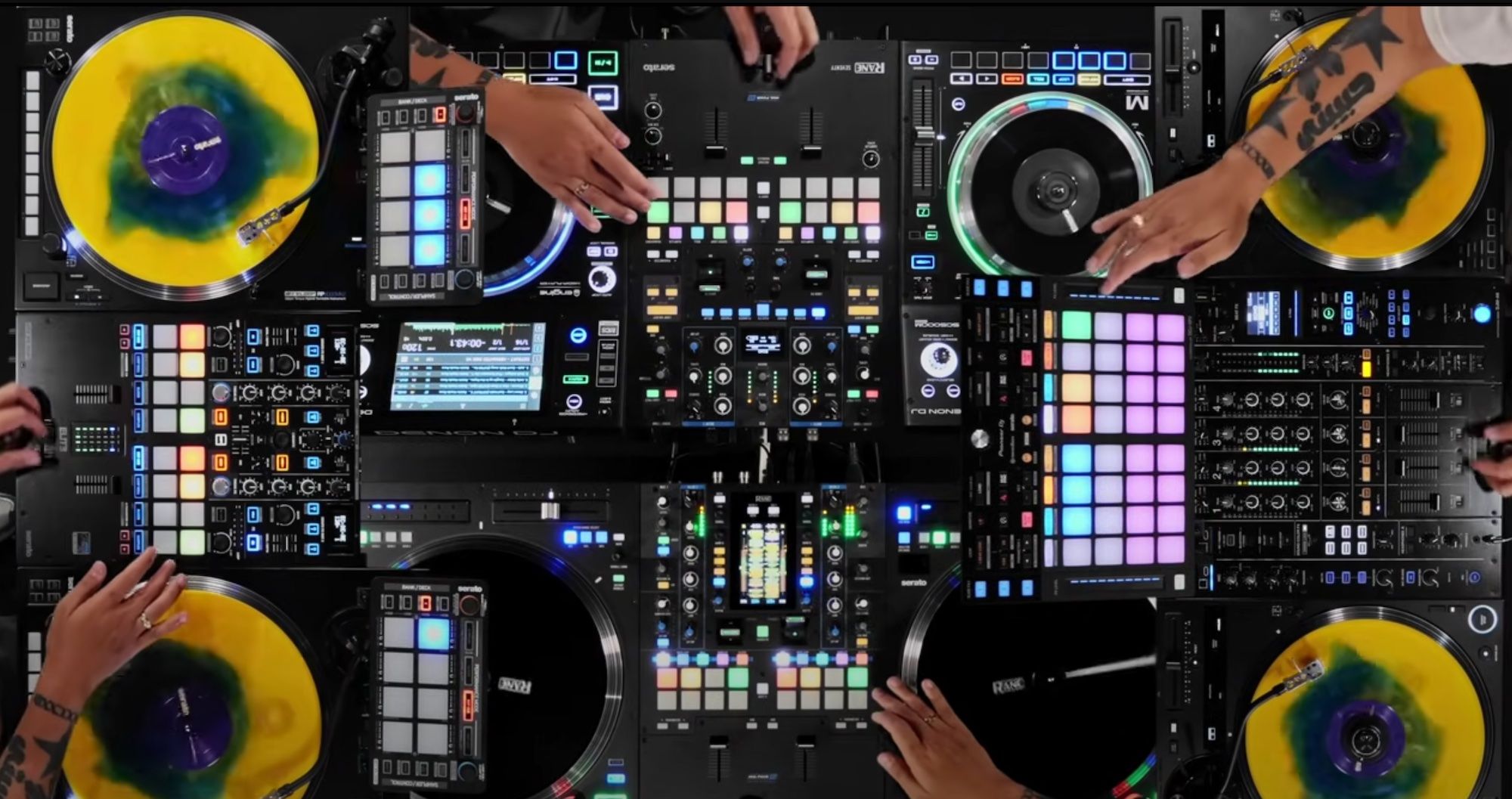Red Bull Thre3style has grown to a global competition that challenges DJs to showcase their best technical and party rocking abilities in a 15 minute set. DJ TechTools got a chance to speak with the 2012 World Champion, Four Color Zack, who shares his creative process for crafting a set and important tips for tone play in a set.
As a past world champion and now as a judge for Red Bull Thre3style, Zack knows how to stand out and more importantly ways to go unnoticed. Keep reading and take notes!
An important part of Four Color Zack’s winning Red Bull Thre3style set was his amazing use of tone play. Watch the video below for a quick rundown on tone play and see Zack showcase some of his best tone play routines.
Creating The Red Bull Thre3style Winning Set
Where did you start when it came to creating the set? Did you create the set from start to finish or have mini routines and then patch them together?
All of my competition sets came from bits and pieces. Sometimes I’d get lucky with how they fit together, but if not I would work on creating parts that would connect existing sections and try to make them as good as the sections themselves. Thats the goal at least. Always trying to make a bunch of little routines fit together so you almost don’t know where they start or stop.
How do you decide what stays and what goes? How many things did you scrap over the entire process?
I’d make as many rough draft sections as possible and then put them down and walk away from them while making new ones. Then once I came back to them, if I wasn’t really excited about them right off the bat, they got ditched.
I have a ton of stuff that hits the cutting room floor. Every once in a while I’ll bring it back out to see if I could fix it to be better. Sometimes I even try to play it in a live set to see if it gets any kind of reaction, but usually if I’m not hyped on it, reaction or no, I’m not gonna end up using it.
You literally drew/mapped out your performance on paper with titles and sections. Can you share a few of those sections/titles and how it helped the planning process? What kind of moments were you trying to create?
I had planned on saving them and actually posting them one day but they got lost in the studio cleaning shuffle. I’m a visual person so its easier for me to draw the sections out and connect them with illustrations or typography then it is to just put them in a text doc.
I’ll try to draw the sections out with the same kind of energy they sound like so when I’m working on connecting the dots, I can see what the overall flow looks like. No set should be 100% highest energy the whole time and drawing sections out helps you see the contrasting highs and lows.
It’s probably very easy to keep tweaking or changing things for your set. How do you know when you’re finished?
Nothing is ever really finished, it just gets played in whatever form it exists at that time. I like keeping things open ended so when you go back and play them again, there’s a ton of new ways to execute it that you can do on the fly.
How do you stand out with your set (For example in all your sets/videos you always seem to play a lot of classic/joke tracks)?
I do my best to have my sets represent how my thought process works. That’s pretty much the main goal and hopefully what helps them stand out. There might be times where I go from something super serious to something really off the wall, but I think thats how music should be, there should be these moments of contrast that make each end of the spectrum seem more extreme.
I think that having fun with music is just as important as raging out. I try not to get too goofy, but I can’t help it, sometimes I have to do something obnoxious to keep people on their toes. Usually it ends up uniting people.
You scrapped a couple sets leading into the world final and put together a new set. What specifically wasn’t working with those previous sets?
After seeing how the crowd and judges reacted to the semi final set, I wanted to go back and make the tunes a little more regional to make sure the selection was going to connect with them so the tricks were more clear. I wanted to be able to make sure that if I was doing something complex, they didn’t need to strain that much to understand it.
It was difficult though because once you change out the tunes, then you need to make new tricks with those tunes and hope the whole set you’ve created is still cohesive. Change one thing in the middle and it could mess up the flow. Always gotta pay attention to the flow.
Did you hit any creative roadblocks? How did you get past them?
Of course, all the time. I don’t really have any methods for getting past it, other than maybe just moving on to something else and hoping something great comes of it. When you are creating under pressure though you don’t always have that option and thats where things get wild. It might help, might not.
Some of my favorite routines have come from crazy timelines where I HAD to deliver. I think the trick there is to accept the speed you need to work, and do your best not to be worried about it.
15 Minutes is a really tricky time. What are your suggestions for starting, keeping interest through the middle, and finishing really strong with a set?
Yeah 15 is tough. When you’re at about the 10 minute mark you really have to recharge the listener. Getting over that hump and wrapping up the last 5 minutes properly will make the set feel like it went by faster. Nothing worse than having the listener look at the clock and think jeez this thing isn’t over yet??
Contrast in energy has always been the way to go for me. Give the crowd time to regroup before hitting them with the finale.
Tone Play Tips
How many of the songs/tone play are done only with cue points? Are some songs re-edited to make them more tone play/transition friendly?
Nearly all the tone play I do is with cue points, unless its something that can be scratched or cleverly woven in, but I think most people relate to the term ‘tone play’ if its hot cues. Sometimes I’ll use an instrumental edit of a song to lead into the trick so that its a little more clear what I’m trying to do.
Keeping it simple and understandable usually is the most effective. But I don’t really get down with tone play routines where the notes of the original song are altered to fit the next song. If they don’t exist already in the original, I move on.
When coming up with tone play routines, what’s the process? Do you layout cue points and start playing until you hear something that might work?
Pretty much. If I hear a song that has clear notes hanging out all by themselves, I’ll put some cues on it and punch on them for a bit. Hearing two notes next to each other triggers ideas pretty fast. Plus knowing how many notes and what range is available helps narrow it down. But I definitely have a folder of tunes that still haven’t found a match. Maybe some day.
What advice would you share to other DJs that want to incorporate tone play into their routines?
If it doesn’t sound right, don’t force it. Nothing worse than out of key tone play, especially in a competition where you’re being judged. I can’t tell you how many eye rolls I’ve witnessed judging competitions.
I look at tone play like its a very intense seasoning. It might be great, but not all the time, and if its not accompanying the right meal its the worst. But used properly can be pretty cool.
Tone play has really blown up in Red Bull Thre3style. What do you think the next evolution of that will be?
Not sure, but I would guess it will be integrating it more seamlessly. Right now when people do tone play its like ‘hey everybody watch this’ and they get everyones attention and make a big deal of it. As it becomes more common it doesn’t need to be called out as much so I think we’ll see tone play being fired off faster, with less of a spotlight on it to keep the momentum going. I’ve also seen a lot more live remixing with midi controllers, but thats really its own thing entirely.
Getting Feedback and Practicing
How did you test parts of your routine before the competition to see what was working?
Usually I can just tell something will work, but if I have doubts i’ll play them for for my wife or play them for my friends. Sometimes I’ll try demo ideas out on crowds to see if theres a reaction and if so I’ll work on improving it. Sometimes it just stays in demo phase forever which is fine. I have tons of demo ideas I still end up playing from time to time.
How did you find time to practice between design work and time with family?
To be totally honest I don’t practice. I know that sounds lame since I always suggest that people practice a ton to get things right but its just the reality. Theres only so much time in the day. Practice usually happens at home, and when I’m at home I’m either reconnecting with my family and trying to get real life stuff done, or finishing off design stuff I couldn’t complete on the plane.
I wouldn’t have it any other way though, you have to have priorities. And what’s nice is being able to adapt, so now when I get an idea on the plane, I’m not really all that worried about trying it for the first time in front of people. Hopefully it works out and I can develop it more for the next show. The R&D part of routines ends up being in transit and thats just how it is. But hey on the flip side I just baked a cake with my daughter and that was definitely more fun than organizing music. 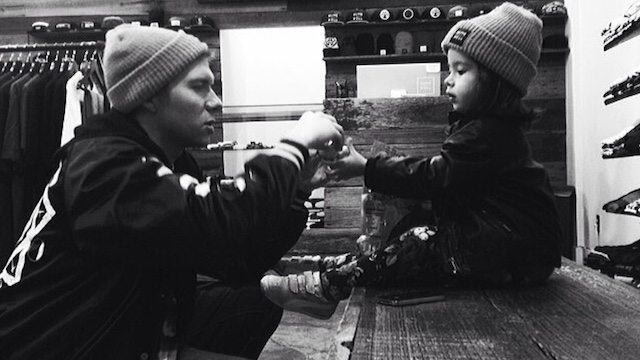
What were some of the biggest challenges with performing/practicing the routine? Any particular part that was hard to nail?
The biggest challenge of performing the world finals routine was not being able to practice it. Making most of it on a notepad is great until its time to actually play it for the first time. Back then I wasn’t as good at the no practice thing so tension was a bit high when it came time to play it for the first time… in front of a ton of people… while your fav DJs are judging you… and your entire year was leading up to that.
But you just have to understand the kind of person you are and trust yourself. I know that I’ve been in those situations before and it worked out, I had to trust that I could make it through again. Sometimes confidence is substitute for preparation when you’re in a jam I guess… not fully endorsing it, but hey.
Performing The Set
What gear are you using? What is the MPD 26 controlling?
I was on 2 Technics turntables, a Rane 62 mixer, and yes the AKAI MPD 26 which was controlling the Serato cue points. I also had put a high and low pass filter control on the faders of the 26, in case I’m ever on a mixer that doesn’t have that kind of filter control.
Are you using the 2 decks for everything or making use of the other decks or Sample player as well?
I try to keep everything pretty bare bones so I was just using the 2 decks. I have friends who know the ins and outs of all the software and hardware and they always do the craziest stuff, but I try to work with what I know.
I keep thinking I’ll learn some of the new features and integrate that into new routines, but free time is hard to come by and honestly I really like simple routines. It’s the ones where you say ‘omg why didn’t I think of that‘ that are the most special to me.
Any pre-performance rituals?
Nah, every time I’m supposed to play it feels like I’m always in a rush just to get there and knock it out, so rituals are never really on the mind.
Thre3style has really grown into a global event and attracts a huge audience. What are your tips for shaking off nerves?
I think the biggest thing to remember is that its all about having fun. If you yourself are having fun, then it doesn’t matter if its a crowd of 20 or 20,000. If you’re having fun, chances are the crowd will notice and follow your lead.
DJing is as much a performance as it is just sharing positive energy. Huge crowds are less scary when you think its just a ton of your friends who are all there to have a good time with you, and theres no reason why they shouldn’t.
After Winning: Lessons From A Champion
You’re a judge now for Thre3style, what kind of things do you look for in a routine? What things have really surprised you?
I like to see the personality of the DJ. My favorite sets are always the ones that are not just replications of past DJs winning sets. I like to see a fresh perspective on the selection, an honest stage presence (meaning they are being themselves and having that be special no matter what it is), and good understanding on where the boundary lines are and when to cross them.
Something I’m always pleasantly surprised by is seeing a DJ with less technical skill but more smarts and originality come out on top. Most of my favorite DJs would not get perfect scores in the technical category.
What are some things that DJs should avoid in their routines?
Cliche and overplayed songs, low hanging fruit/obvious routines that have been done a million times, unsuccessful tone play. Pretty much avoid putting together a set you don’t feel is a good representation of yourself. It’s the perfect chance to show off why people should check for you and not the next DJ. Going for all the obvious stuff is a quick way to go unnoticed.
For people that may be on the fence about entering in the competition, what would you say to them?
I have NEVER seen a DJs career suffer from losing. Everyone who enters gains new fans and friends. It’s a positive outlet, not a measure of your value. And speaking from experience, it really helps you figure out who you are as a DJ and what makes you special.
What are you focusing on now and where can people go to find you online? Right now I’m touring on the 2015 US circuit of Thre3style, both judging and showcasing. International heats to follow. I’m always out there doing my own touring and residencies too which has been a blast.
I’m putting out and EP on Fool’s Gold next month with my homie DJ Scene, as well as a ton of other new music. Got a special new project coming up with DJ Craze thats gonna be wild. Also still designing for my skate shop in Seattle, Alive & Well. So I guess a full plate.
Stay up to date with Four Color Zack on fourcolorzack.com, Soundcloud, Twitter, Instagram, Facebook
Want more awesome interviews?



